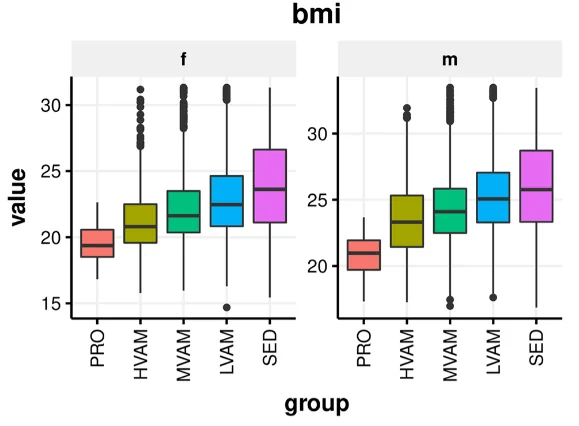In a recent publication in PLOS One, researchers have described the metabolic effects on running in generally healthy people.
A lack of activity is a known risk factor
This paper begins with warnings against sedentary behavior, citing one study reporting that it is responsible for approximately 1 out of 12 early deaths in the United States, on par with smoking and obesity [1]. Many studies have reported exercise to be highly effective as a medical intervention, including for such age-related conditions as type 2 diabetes [2].
However, nearly all studies on exercise are either on its effects on people with diagnosed disorders [3] or committed athletes [4], meaning that its effects on the general population are less detailed. Therefore, these researchers have developed a study to fill this gap, with their study using data from generally healthy individuals.
A health platform provides a broad dataset
This study used data gleaned from a total of 23,237 of the InsideTracker platform’s subscribers. The participants volunteered their data to be used for research purposes, which consisted both of blood testing and self-reported information. Notably, while medical history was not part of the platform or this study, the participants had blood biomarkers within normal ranges and did not have any diagnosed chronic conditions.
As expected, because this was a study of people’s normal habits, people who ran regularly were both younger and considerably leaner than people who did not. Regular cardio exercise is very well-known to have effects on body mass, and obesity is known to have effects on metabolic markers. The researchers took this into account, adjusting for age, gender, and body mass index (BMI).
Significant associations with biomarkers
Running was associated with less blood glucose, fewer white blood cells, less of the “bad” cholesterol LDL, and less of the inflammatory biomarker hsCRP. Instead, more frequent runners had more B12, folate, and vitamin D in their systems along with more of the “good” cholesterol HDL. Professional-level runners also had less blood magnesium.
Some of these changes in biomarkers were associated with sex. For example, hematocrit and hemogloblin, two metrics of oxygen carrying capacity, were only significantly associated in males with professional-level running, while these metrics were improved in women with running at all levels.
The association with lower BMI was striking and across-the-board. Among the participants in this study, the majority of the sedentary men were overweight as defined by the CDC (BMI > 25), while women who did not run were also considerably more likely to be overweight. This chart is organized by levels of running, decreasing left to right.

Unsurprisingly, nearly all of the associations between running and health biomarkers could be explained by its relationship with BMI. Inflammation, glucose, and lipid metabolism biomarkers were directly related to this metric. After conducting statistical analyses in an effort to control for BMI, the researchers found that vigorous physical activity was still associated with reduced inflammation and glucose along with more HDL.
Limitations and caveats
This is an association study that cannot prove causality. Most notably, while the researchers were able to adjust for BMI, they acknowledged that they could only predict, rather than measure, running being associated with other healthy habits. For example, levels of crucial vitamins were higher in more serious runners, which is likely to be the result of different dietary practices rather than the running itself. HDL and LDL cholesterol are also known to be affected by diet.
This study relied on self-reported amounts of running, which may not be fully reliable. It also had an inherent bias: the people involved were volunteers who had signed up for a health product, which is not likely to be an accurate cross-section of the general population. Still, this study provides insight into the many positive associations between regular exercise and overall health.
Literature
[1] Carlson, S. A., Adams, E. K., Yang, Z., & Fulton, J. E. (2018). Peer reviewed: percentage of deaths associated with inadequate physical activity in the United States. Preventing chronic disease, 15.
[2] Sgro, P., Emerenziani, G. P., Antinozzi, C., Sacchetti, M., & Di Luigi, L. (2021). Exercise as a drug for glucose management and prevention in type 2 diabetes mellitus. Current opinion in pharmacology, 59, 95-102.
[3] Lin, X., Zhang, X., Guo, J., Roberts, C. K., McKenzie, S., Wu, W. C., … & Song, Y. (2015). Abstract P270: Effects of Exercise Training on Cardiorespiratory Fitness and Biomarkers of Cardio-metabolic Health: A Systematic Review and Meta-Analysis of Randomized Controlled Trials. Circulation, 131(suppl_1), AP270-AP270.
[4] Lee, E. C., Fragala, M. S., Kavouras, S. A., Queen, R. M., Pryor, J. L., & Casa, D. J. (2017). Biomarkers in sports and exercise: tracking health, performance, and recovery in athletes. Journal of strength and conditioning research, 31(10), 2920.




